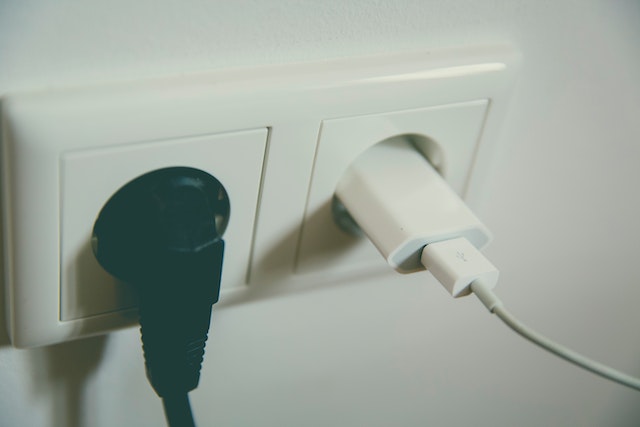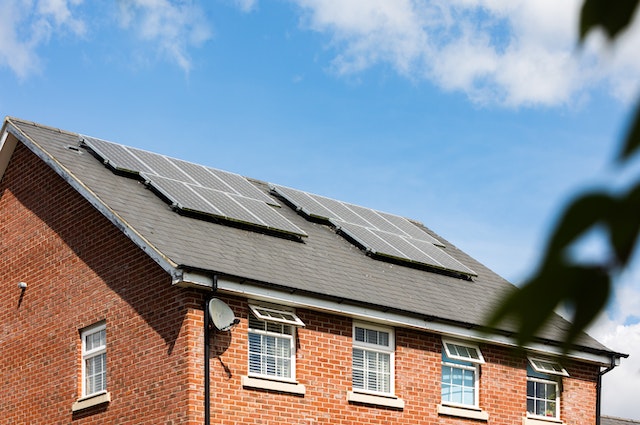
In the current era, homeowners face the dual challenge of escalating energy bills and growing environmental pressures. In the last decade, we’ve witnessed a significant surge in energy costs, with prices soaring by approximately 30%. This sharp rise underscores the urgency to reevaluate how we consume resources within our homes.
Simultaneously, the evident repercussions of climate change drive the narrative toward a more sustainable way of living. Green living is no longer an option; it’s a necessity. Prioritizing energy efficiency within our homes directly addresses these concerns. Slight modifications can significantly reduce our utility bills but also contribute to a more prominent cause: a reduction in the environmental footprint we leave behind. In essence, you want to make your home more energy-efficient since it plays a pivotal role in preserving our planet and ensuring financial well-being.
Make Your Home More Energy-Efficient: Seal and Insulate
It’s astounding how much energy homes that lack adequate insulation squander:
- Uninsulated Walls: Approximately 35% of heat loss occurs through walls in uninsulated homes.
- Roofs and Ceilings: About 25% of a home’s heat can escape through an uninsulated roof.
- Doors and Windows: These common culprits account for almost 20% of heat loss in homes with gaps and drafts.
Addressing these vulnerabilities is vital. If possible, even before you move into your new home. A well-insulated house saves an average of 15% on heating and cooling costs, translating to significant annual savings. Regularly maintain windows and doors to keep them in good condition. Simple steps like checking for drafts will amplify energy conservation. Weatherstripping to seal door thresholds and caulking gaps in window frames can effectively prevent the escape of warm or cool air, ensuring your home remain comfortable throughout the year.

Solar panels contribute to the environment and make your home more desirable and valuable on the market.
Make Your Home More Energy-Efficient: The Power of Solar Panels
Solar panels are revolutionizing the way we think about home energy. By transforming sunlight directly into electricity, they offer homeowners a means to generate clean, green power right from their rooftops. But solar energy offers multiple benefits beyond the obvious advantage of reduced electricity bills.
It reduces greenhouse gas emissions, thus contributing to a healthier environment and diminishing our carbon footprint. Furthermore, it boosts your home’s market value as properties with solar installations often command a higher resale price. Recognizing the potential of solar energy, many governments and organizations now offer a range of incentives and rebates, encouraging more homeowners to make the switch. As we move forward, solar energy will play a pivotal role in shaping a greener future.

Plant trees around your house: they will be helpful in both summer and winter.
Landscaping for Efficiency: Greenery that Protects and Powers
Strategic landscaping, much like choosing the right home, can significantly influence energy consumption. It’ll make your home more energy-efficient. Trees planted around a home can shade it during scorching summers, reducing air conditioning costs. Conversely, in winter, they act as natural insulators, conserving warmth. Additionally, green roofs and walls beautify spaces and enhance energy efficiency.
Interestingly, the employees at Professional Movers Canada observed a rising trend in eco-friendly moving where homeowners shift to properties with energy-efficient landscapes. Their research underlines the intertwined relationship between smart landscaping and energy savings, highlighting how going green can indeed save the green.
Smart Thermostats: Automate Your Home’s Temperature
Traditional thermostats rely on human input, making it easy to forget to adjust the temperature when leaving or returning home. This forgetfulness can lead to prolonged and unnecessary heating or cooling, resulting in higher energy consumption and costs. However, embracing the concept of a smart home offers a transformative solution. Smart thermostats utilize cutting-edge technology to learn from homeowners’ behavior, adjust temperature settings accordingly, and adapt to external weather conditions.
Programming these intelligent devices for optimal energy savings is a breeze, enabling users to set customized schedules that align with their daily routines. Additionally, remote access via smartphone apps allows fine-tuning temperature settings even when we are away. Smart thermostats ensure efficient energy management and promote comfort and eco-friendliness within our living spaces by automating temperature control.

Look for an Energy Star rating for your appliances to make your home more energy-efficient.
Energy-Efficient Appliances: A Worthwhile Investment
A blank canvas awaits your personalized touch if you plan a home renovation or move into a new house. While the temptation to purchase all-new appliances may be high, it’s essential to recognize the potential wastage with energy-inefficient choices.
Not all gleaming new appliances are designed equal. Many of the older ones you own might outperform newer models in energy conservation if they are energy-efficient. Before making the switch, check the Energy Star rating on your existing appliances. This rating signifies optimized energy consumption and reduced greenhouse emissions.
So, packing up your small kitchen appliances should be easier now: if they hold this coveted certification, it might be wise to pack up your old appliances and take them along when you move into your new home. On the other hand, if some of them are not energy-efficient, consider replacing them. While Energy Star-rated appliances may initially come with a slightly higher price tag, the long-term savings on utility bills make them a financially savvy choice.
Efficient Water Use: Save Energy Beyond Electricity
The relationship between water usage and energy consumption may not be obvious, but it is crucial to make your home more energy efficient. Switching to energy-efficient water heaters is a significant step forward. Modern designs, such as tankless or on-demand heaters, heat water only when required, eliminating the energy wastage of keeping large tanks hot.
Beyond the heating mechanism, there are numerous ways to conserve water and, by extension, save energy. Integrating low-flow fixtures, for instance, can drastically reduce the water flow in showers and taps without compromising performance. Implementing water-saving techniques, like collecting rainwater for gardening or fixing leaky faucets promptly, can also contribute to notable energy savings.
Therefore, when choosing a new home, prioritize those with energy-efficient water heaters and eco-friendly plumbing systems, or consider installing them after you move in.
Conclusion
In the quest to make your home more energy-efficient, homeowners stand to reap both financial and environmental benefits. Each energy-saving step curbs monthly expenses and mitigates environmental impacts, resulting in a healthier planet. The collective outcome of numerous households embracing energy efficiency amplifies positive change, demonstrating how individual efforts can lead to significant communal gains.
As the world continues to evolve, it’s vital for homeowners to remain informed about emerging energy-efficient practices. Let’s champion the cause, committing to continuous learning and steadfast implementation, ensuring our homes are not just spaces of comfort but also bastions of sustainability.
